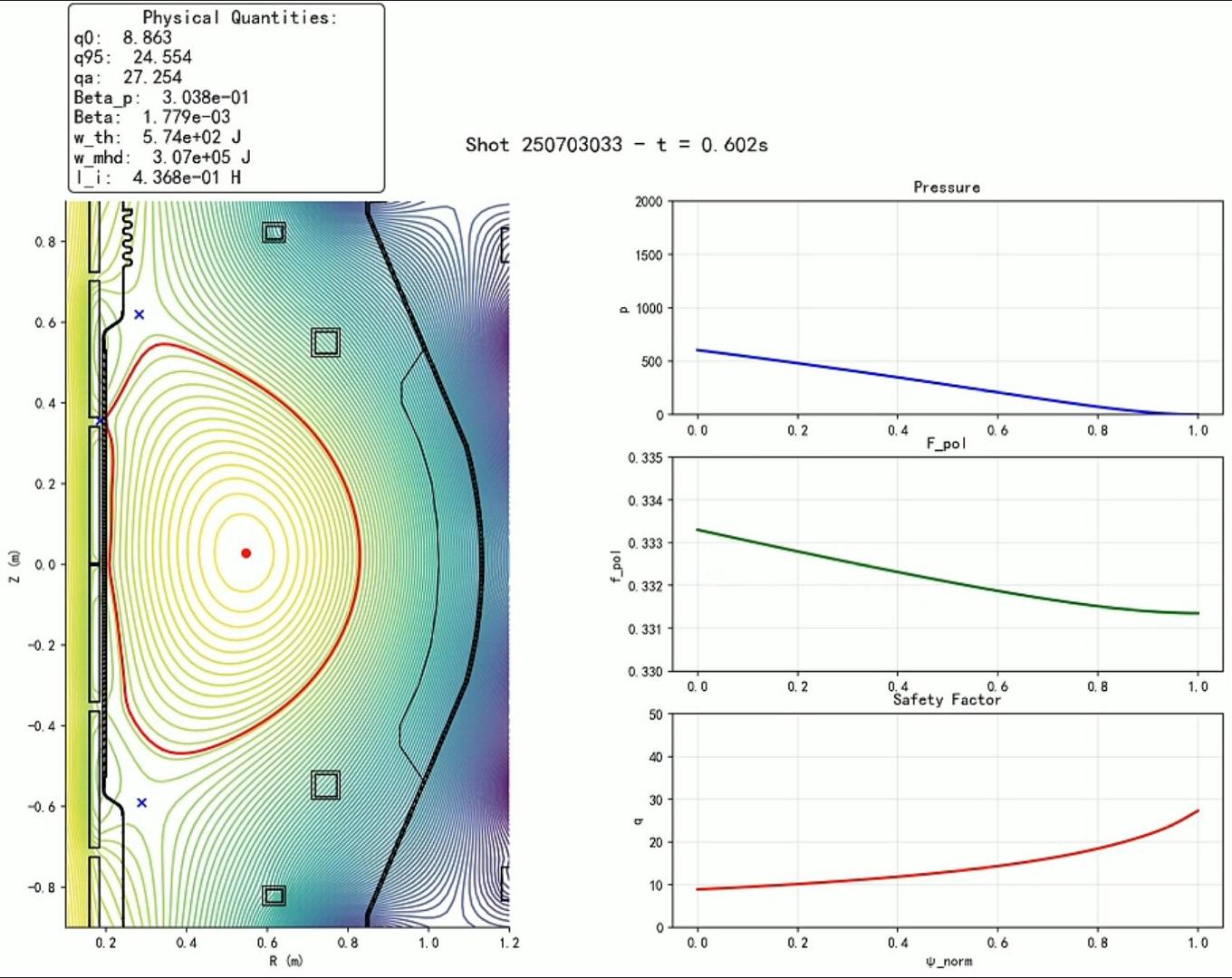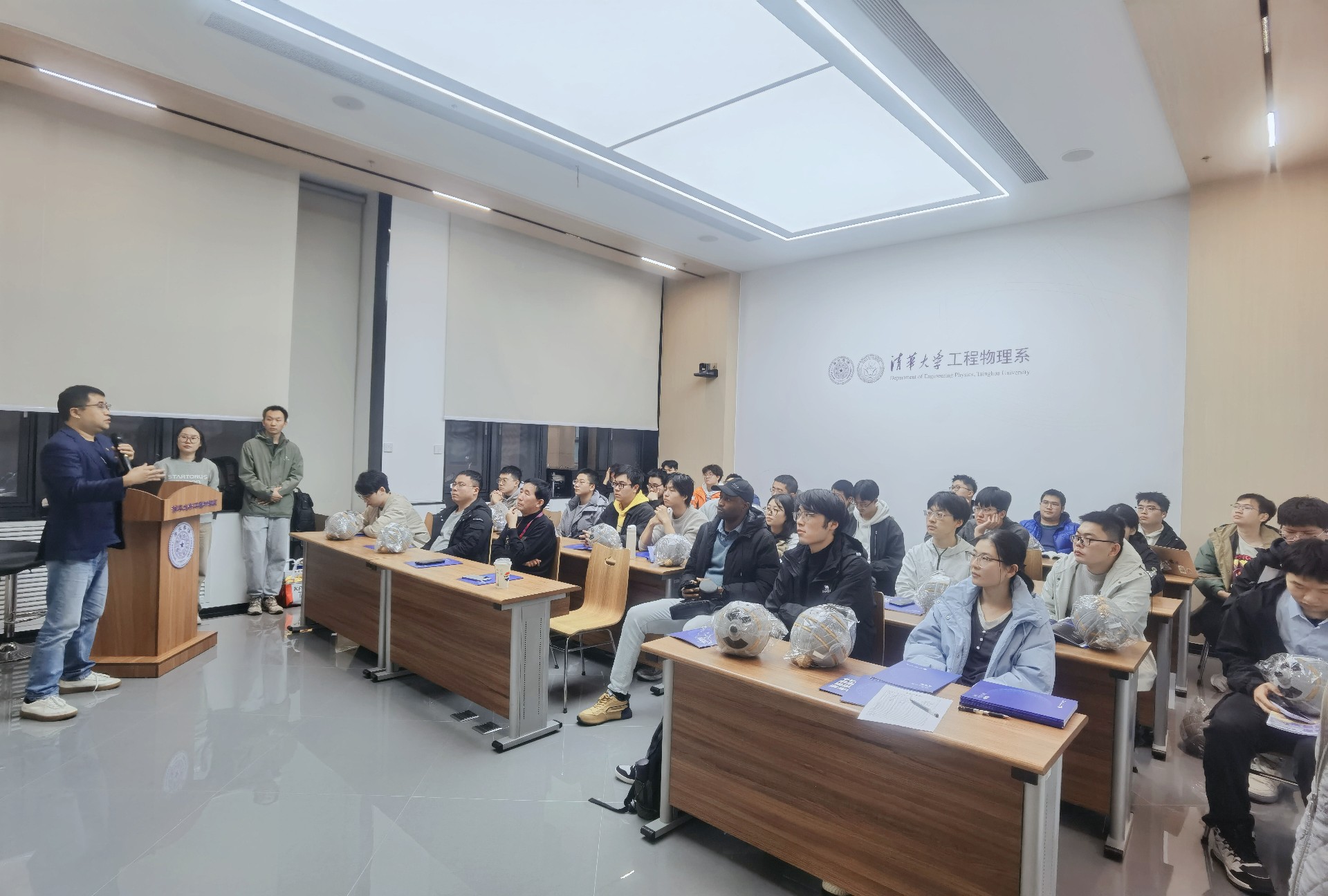Recently, the author of the cutting-edge technology Sentry interviewed Startorus Fusion, where CEO Chen Rui stated, "In the history of mankind, controlled nuclear fusion research has come a long way, spanning over 70 years. In recent years, with the introduction of second-generation high-temperature superconducting technology, advancements in plasma control capabilities, and progress in fusion-related engineering technologies, we believe that we are getting closer to achieving the ignition conditions for controlled nuclear fusion. According to a survey by the International Fusion Association, most commercial fusion companies are dedicated to generating electricity through fusion within the next 10 years."
Established in October 2021, Startorus Fusion is committed to the commercial application of fusion energy and related technology research. Their mission is to build the first commercially controlled fusion reactor in China. They focus on compact, commercial, and rapidly iterated controlled fusion energy devices, striving to become a globally leading fusion energy technology company that encompasses research, design, and operation.
The following is the full report:
Expertise|Chen Rui
Source|Startorus Fusion

The United Nations Framework Convention on Climate Change (UNFCCC) Secretariat released an important report on September 8th, stating that the "window for global emissions reduction is rapidly closing." It called on all countries worldwide to take practical action to address climate change, reduce emissions as soon as possible, and avoid a series of severe disasters caused by global warming.
In recent years, climate change and its cascading effects have had a significant impact on humanity and the global ecosystem. Climate change has undoubtedly become a "grey rhino" event in global development. These events include extreme weather events, rising sea levels, land degradation, and biodiversity loss, all closely associated with greenhouse gas emissions resulting from human activities.

△An emaciated polar bear, Image source: Kerstin Langenberger
The United Nations, through its report, calls on governments, businesses, and individuals to collectively work towards promoting energy transition, reducing carbon emissions, and improving climate adaptation. One crucial aspect the UN mentioned is reducing reliance on fossil fuels and increasing the use of renewable energy sources such as solar, wind, and nuclear power, gradually phasing out high-carbon-emitting energy sources. On December 13, 2022, the United States announced its successful "ignition" in a controlled nuclear fusion reaction, achieving "net energy gain" for the first time. On September 15, 2023, Xinhua News Agency reported that the "Kua Fu" nuclear fusion research facility in Anhui Province, China, is expected to be completed by the end of 2025. Scientists have already initiated various research activities within this complex.
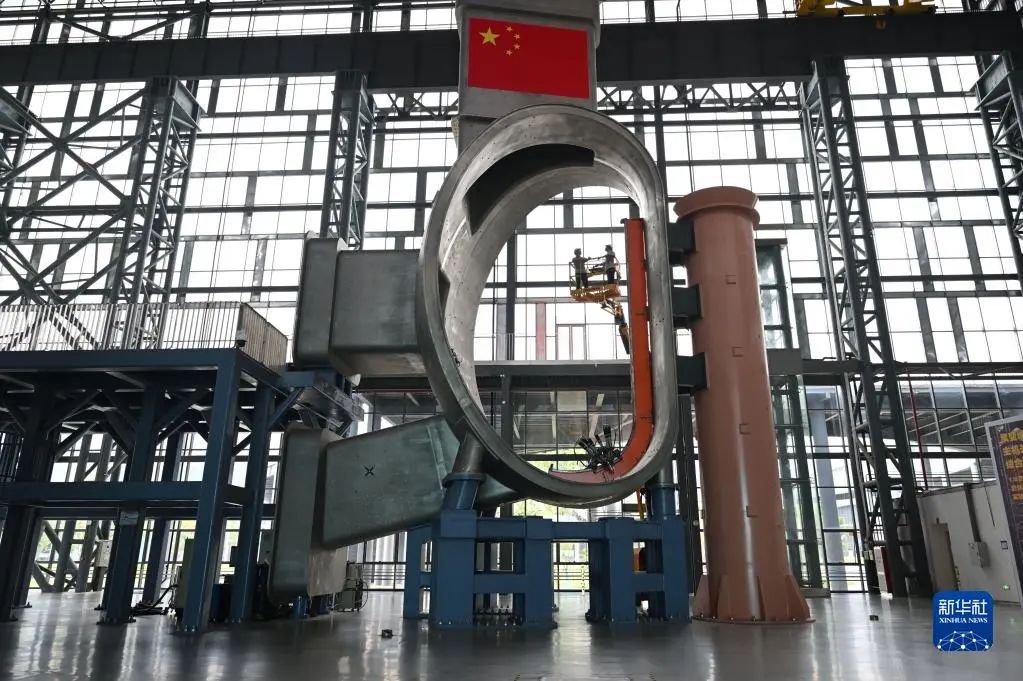
After almost half a century of silence, nuclear fusion has suddenly become the core solution to the greenhouse problem as a clean and safe energy source. It has also become a hotspot topic of discussion everywhere. Today, we have invited Chen Rui, the CEO of Startorus Fusion, to talk about the future of nuclear fusion.
Cutting-edge Technologies X Controlled Nuclear Fusion
Q: Could you give us a brief introduction to controlled nuclear fusion? When do you estimate it can be widely applied?
Let's first discuss nuclear energy as it is widely known. Currently, the main technology used is nuclear fission, commonly associated with nuclear power plants. The energy is generated by splitting atomic nuclei, which releases tremendous amounts of energy. The raw materials for nuclear fission are primarily heavy elements like uranium, thorium, and plutonium, which are radioactive.
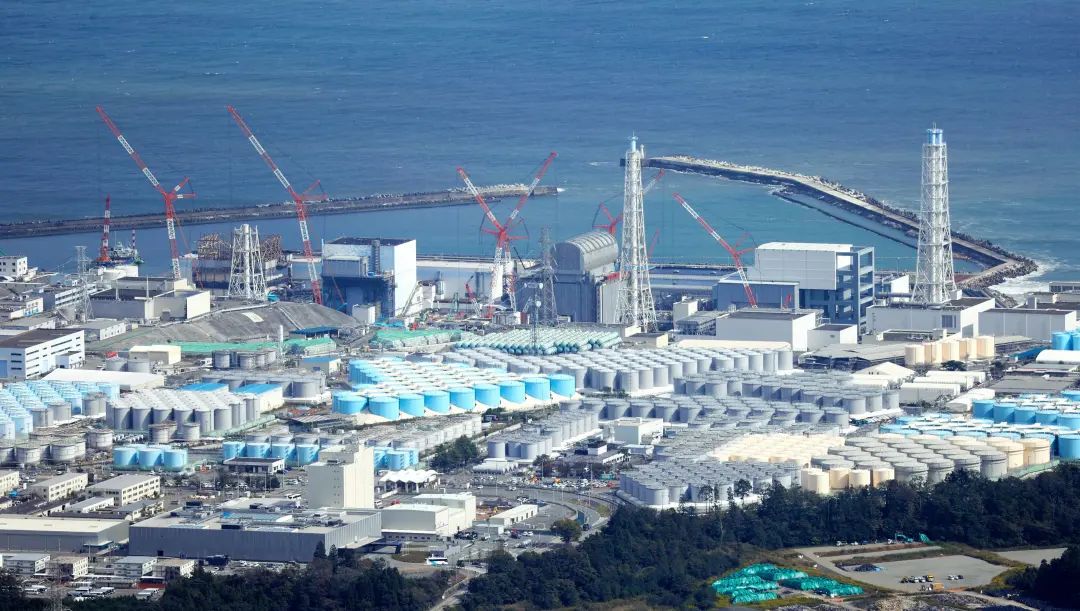
Another mainstream nuclear energy technology is nuclear fusion. Nuclear fusion is hailed as the "Holy Grail" of the energy industry and is considered the "ultimate energy source" for humanity. Compared to other energy sources, nuclear fusion has three outstanding advantages: it is clean and safe, offers a nearly limitless energy supply, and has extremely high energy efficiency.
Although both nuclear fission and nuclear fusion are sources of new energy, there are significant differences between the two. Firstly, they differ in terms of raw materials. Secondly, they differ in the way the reactions are generated. If nuclear fission, which generates energy by splitting heavy atomic nuclei, is likened to breaking a mirror, then nuclear fusion, on the other hand, can be described as the opposite process of restoring the broken mirror - releasing energy through "making broken pieces whole again".
Similar fusion reactions occur continuously in the interior of the Sun, resulting in a constant emission of light and heat.
The principle of nuclear fusion involves the combination of atomic nuclei of light elements (such as common hydrogen isotopes) to form heavier atomic nuclei, simultaneously releasing neutrons and producing tremendous amounts of energy.

Compared to the widely used nuclear energy (nuclear fission), nuclear fusion does not produce nuclear waste and has minimal radiation, making it an important green energy solution. Additionally, the safety concerns associated with nuclear fission do not exist in nuclear fusion. Traditional nuclear power plants rely on nuclear fission reactions, which are self-amplifying chain reactions that require precise control. If they go out of control, it is challenging to stop them, leading to core meltdowns or even boiler explosions, releasing large amounts of radioactive pollutants. However, nuclear fusion is different. The safety of nuclear fusion does not rely on human management but rather on the laws of physics. For example, suppose there were a group of terrorists trying to attack a nuclear fusion power plant to cause an explosion, they would find it impossible because nuclear fusion technology requires continuous heating. The worst they could do is cool it down, but there is no way to make a nuclear fusion power plant explode. It is simply not achievable from an engineering perspective.
Furthermore, the energy resources for nuclear fusion are extremely abundant. Taking deuterium-tritium fusion, which is the easiest fusion reaction to achieve on Earth, as an example, the primary raw materials for deuterium-tritium fusion are deuterium and tritium. Deuterium is abundant in seawater, while tritium can be self-sustained through fusion reactions. The abundance of these raw materials is sufficient to support human use for billions of years.
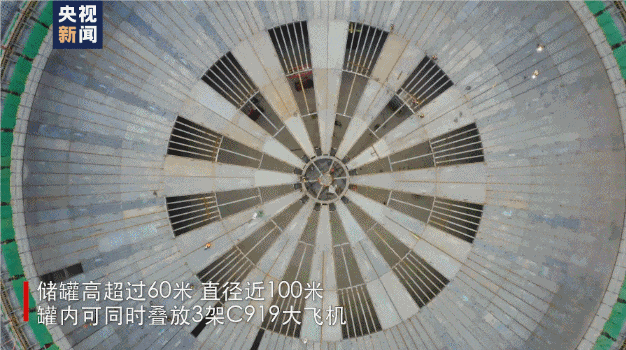
Another advantage of nuclear fusion is that its energy density is extremely high. This means that we don't need larger spaces to store energy, and transportation becomes more convenient. For example, to meet the global electricity demand for an entire year, nuclear fusion would only require a single truck weighing a hundred tons to transport all the necessary fusion materials. Due to its high energy density, nuclear fusion technology could even become one of the energy sources for imaginable and reachable interstellar travel. Normally, a chemical rocket with a thrust of 3,000 tons allocates over 90% of its payload for fuel, resulting in a capacity of only 200 tons to low Earth orbit and 50 tons to the Moon. Once nuclear fusion technology matures, perhaps only 10% of the fuel source will be needed, and the remaining 90% can be used for cargo, greatly improving transportation efficiency. It can be said that nuclear fusion has diverse and abundant application scenarios.
However, for nuclear fusion to truly benefit humanity, it still faces many technological and scientific challenges. One key technical indicator is whether the energy produced by fusion can surpass the energy consumed (Q>1). Only then can the fusion reaction reach a self-sustaining state, commonly referred to as the ignition condition. Controlled nuclear fusion research has been ongoing for over 70 years in human history. In recent years, with the introduction of second-generation high-temperature superconducting technology, advancements in plasma control capabilities, and progress in fusion-related engineering technologies, we believe that controlled nuclear fusion is getting closer to achieving the ignition condition. According to surveys conducted by the International Fusion Energy Organization, most commercial fusion companies are committed to generating electricity through fusion within the next 10 years.
Q: Can you introduce to us several technical approaches to controlled nuclear fusion?
For humanity to generate usable energy through nuclear fusion, controlled nuclear fusion must be achieved. Hydrogen bombs, for example, are an uncontrolled form of nuclear fusion that can cause devastating destruction. Currently, the mainstream methods for controlled fusion are inertial confinement and magnetic confinement. Inertial confinement fusion (ICF) is one of the pathways to achieve controlled nuclear fusion. It involves compressing the fusion fuel through implosion to reach high temperatures and densities. During the implosion process under inertial confinement, experimental conditions for ignition and burning of the fusion fuel are achieved, thus obtaining fusion energy.
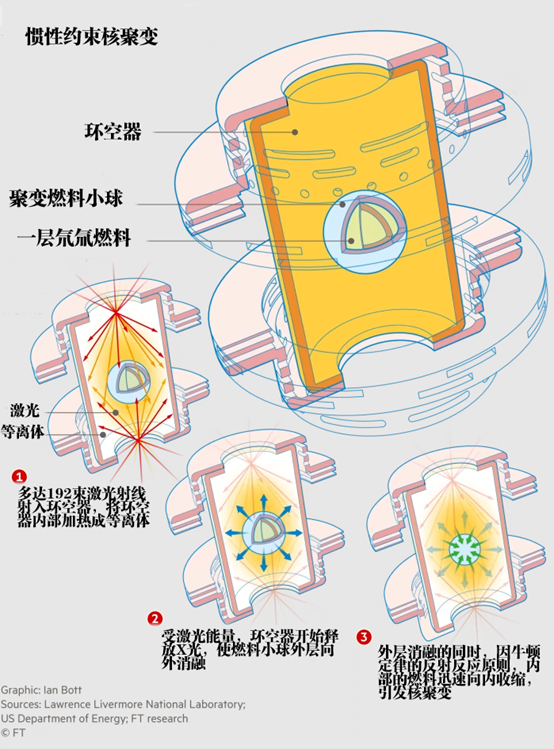
Laser fusion is a type of inertial confinement fusion that primarily utilizes lasers as the driving source. The National Ignition Facility (NIF), a state-of-the-art facility announced by Lawrence Livermore National Laboratory, is constructed based on the "inertial confinement approach." It is the world's largest laser system, with a total cost of 3.5 billion US dollars, representing a significant breakthrough.
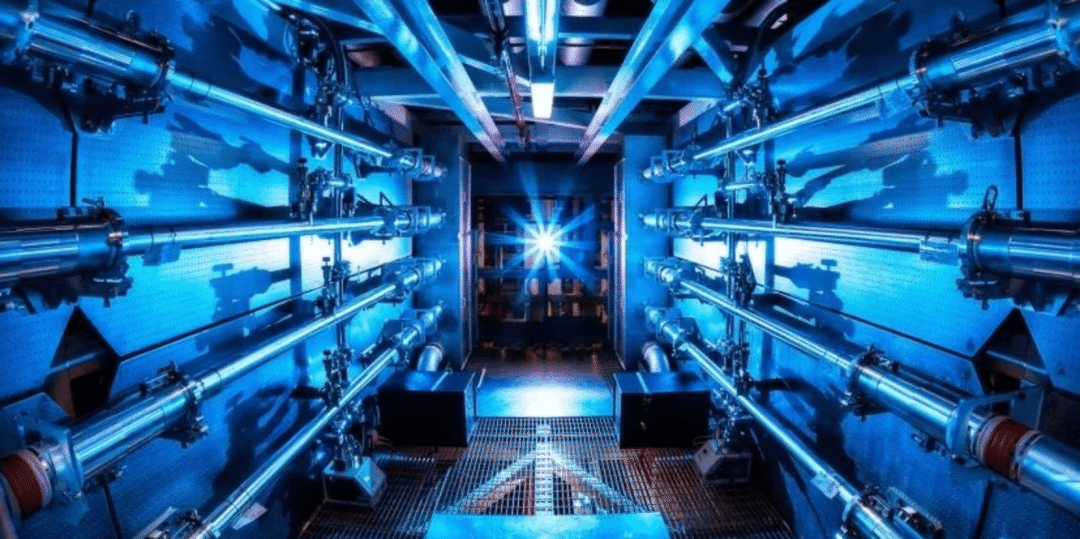
△Lawrence Livermore National Laboratory
However, compared to practical power generation applications, the laser confinement approach is primarily used for scientific research purposes.
Another technical approach to nuclear fusion is magnetic confinement fusion. Magnetic confinement fusion involves using specially shaped magnetic fields to confine a high-temperature plasma composed of light atomic nuclei such as deuterium, tritium, and free electrons within a limited volume. This enables controlled and substantial nuclear fusion reactions to occur, releasing energy.
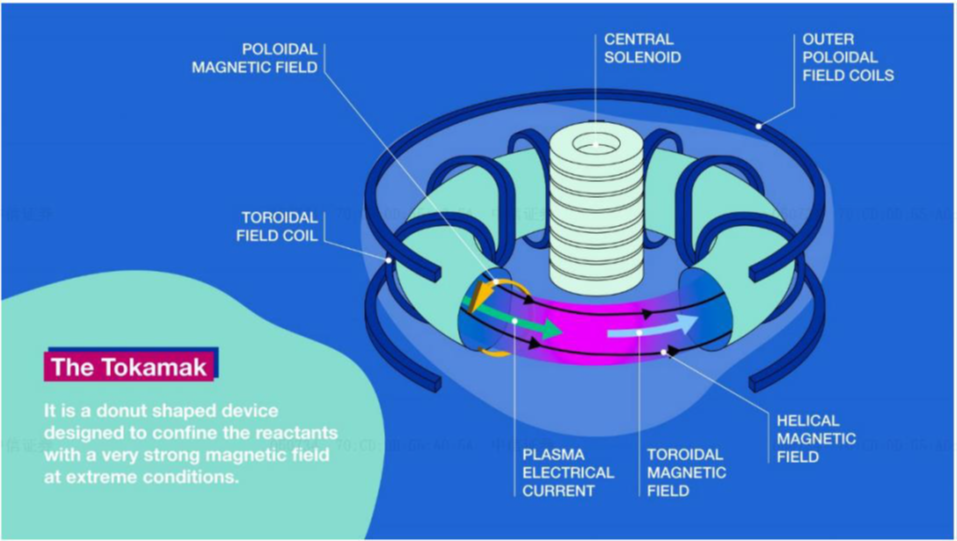
One of the main directions in this approach is the use of Tokamak devices. A Tokamak is a toroidal container that uses magnetic fields to create a "magnetic cage" to confine the plasma, creating the conditions of deuterium and tritium fusion and achieving ultra-high temperatures for controlled nuclear fusion.
Derived from the Tokamak design is the spherical Tokamak, which reduces the central aperture compared to traditional Tokamaks, resulting in a nearly spherical shape. Spherical Tokamaks have a higher specific pressure (a measure of magnetic field utilization efficiency) than traditional devices. They can confine the same plasma with a weaker magnetic field or achieve higher plasma pressure with the same magnetic field, resulting in higher power output.
Our company's technical approach is also based on the spherical Tokamak. Leveraging over 20 years of research achievements and experience accumulated at the Controlled Fusion Laboratory of Tsinghua University, our founding team has developed a compact, repetitive, and reconnection-based controlled fusion technology scheme in a high-temperature superconducting strong magnetic field spherical Tokamak. This technology aims to achieve efficient, stable, and economically viable fusion energy output within a relatively compact size.
In addition to Tokamak reactors, the Stellarator is also a type of magnetic confinement device. However, the Stellarator currently lags behind Tokamaks in plasma density and temperature, so it has not become mainstream.
Q: It feels like the technology has been proposed for a long time, but commercially controlled nuclear fusion has always seemed distant, even to the point of being referred to as "always 30 years away."
The main reason for this "always 30 years away" sentiment is the several challenges associated with controlled nuclear fusion. Let's discuss one of the popular devices for controlled nuclear fusion, the Tokamak, in the context of these challenges.
Nuclear fusion, in simple terms, involves bringing two atomic nuclei together to merge. However, to achieve this, we need high temperatures because the positively charged atomic nuclei repel each other.
Taking deuterium-tritium fusion as an example, the reaction temperature at atmospheric pressure is approximately 150 million degrees Celsius, ten times the temperature at the core of the sun.
Currently, the substance with the highest melting point in the world is tantalum hafnium carbide (TaHfC), which melts at 4215°C, still significantly lower than the required reaction temperature. This brings us to the first challenge of nuclear fusion: we need a device capable of withstanding temperatures as high as 150 million degrees Celsius. The Tokamak device, which uses magnetic fields to create an invisible, high-temperature reactor capable of containing the fusion fuel in a suspended state within a vacuum, addresses this challenge.
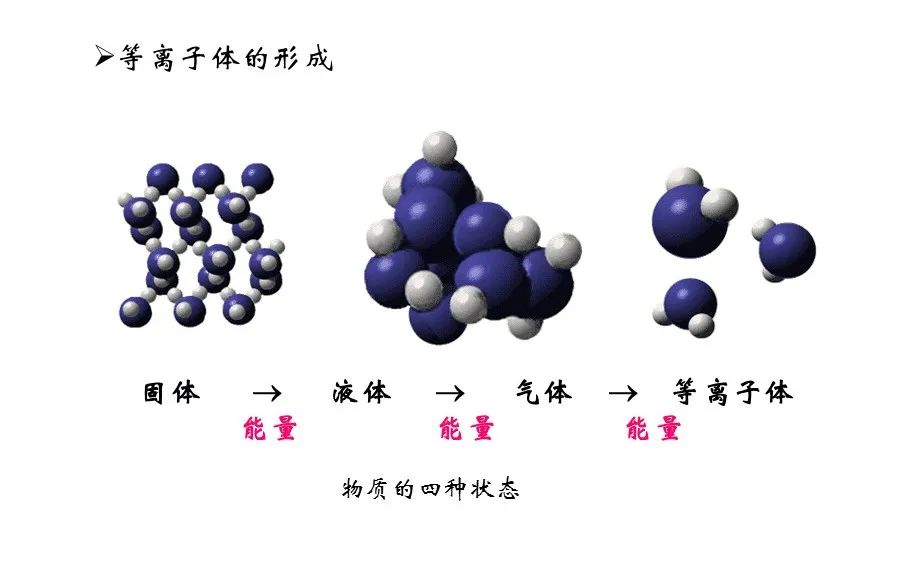
Furthermore,in nuclear fusion,the fuel exists in a state called plasma where the electrons are stripped from the atoms, leaving only ionized nuclei.This results in a mixture of positively charged ions and negatively charge electrons.
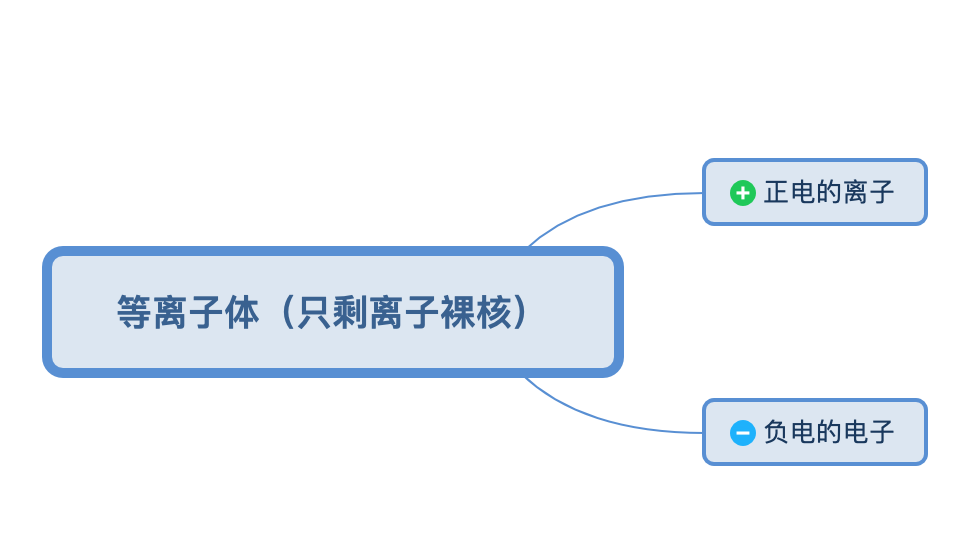
In this situstion where the reaction fuel is charged,we need to use magnetic fields to control it within a certain range.
The Tokamak device also accomplishes this task. It utilizes multiple toroidal magnetic coils to create magnetic field lines that pass through the device in a direction perpendicular to the toroidal plane. When ions and electrons in the plasma move within the toroidal region, they experience a force perpendicular to the magnetic field lines, causing them to change direction. If the magnetic field is strong enough and the radius of curvature is small, they will follow the magnetic field lines in a circular path, thereby being confined and unable to escape.
Besides, to prevent the plasma from escaping through the ends, the toroidal magnetic coils are connected to form a doughnut-shaped structure.
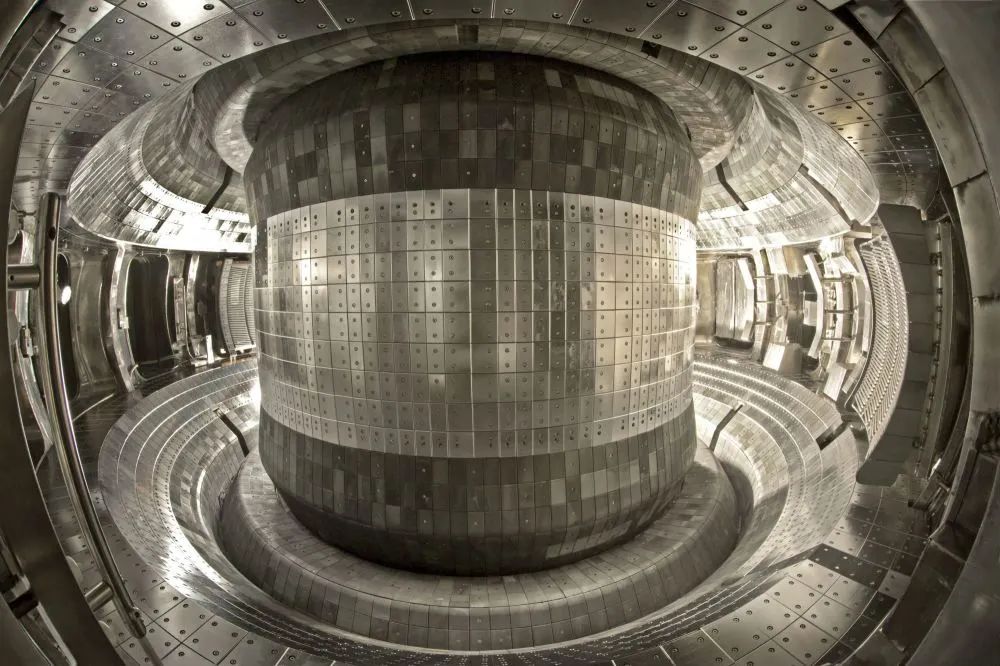
△The interior of a spherical Tokamak device
Although the Tokamak has addressed theoretical challenges, there are still numerous difficulties in practical operation. Just like getting a car to start running is the first step, it needs to continue running to be drivable.
After ignition, a nuclear fusion device requires an overall energy efficiency greater than 1. Without delving into the technical details, achieving this with traditional Tokamaks would require them to be extremely large according to theoretical considerations.
In 1985, Soviet General Secretary Mikhail Gorbachev proposed to U.S. President Ronald Reagan the joint construction of a large-scale Tokamak device, which eventually became the legendary International Thermonuclear Experimental Reactor (ITER). Located in Cadarache, a small town in southern France, ITER covers an area of 180 hectares and has a total weight of about 23,000 tons. A single magnet on top of the device weighs as much as a fully loaded Boeing 747 aircraft.
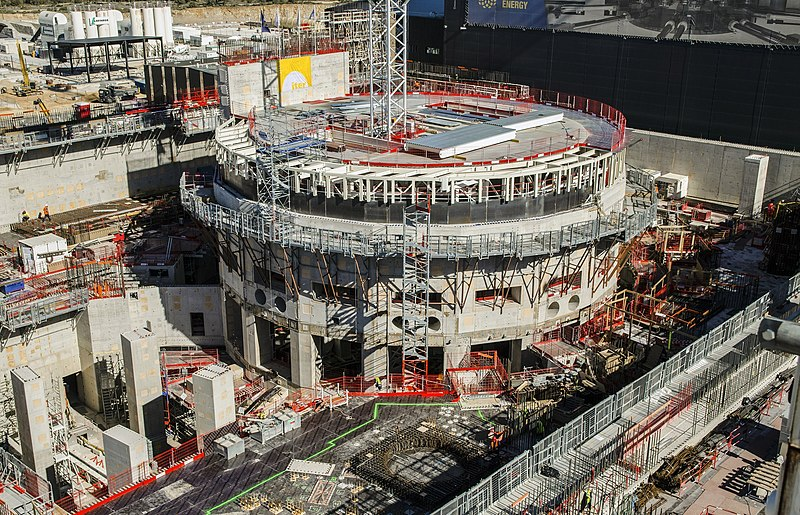
To transport those massive components from suppliers worldwide, several new roads had to be constructed because the existing ones were not wide enough. The project has experienced multiple delays, and the estimated total investment has reached as high as 60 billion euros, equivalent to 480 billion Chinese yuan.
This is for an experimental facility, so one can imagine the difficulties faced in practical operation. These factors contribute to the reason behind the jest of "always 30 years away."
Q: I am aware that the Startorus Fusion device is not as large. Does this signify a new development in controlled nuclear fusion?
Chen Rui:
Let me first update you on some of our recent developments: In June, our company, Startorus Fusion, was listed as a potential ‘unicorn enterprise’ in China for 2022. In July, we completed the construction of the first fusion device, China Joint Spherical Tokamak-2 (SUNIST-2), in collaboration with Tsinghua University. We have conducted the initial operation and achieved a plasma current of 100 kiloamperes. So far, Startorus Fusion has built its first fusion device and obtained the first plasma shot. It can be said that we have achieved certain accomplishments on the path towards commercializing controlled nuclear fusion.
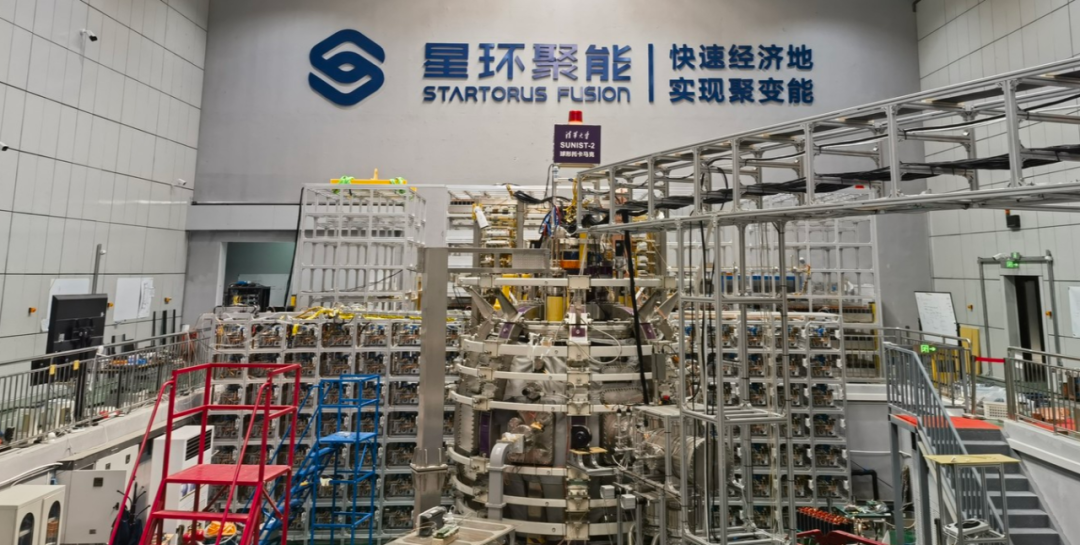
To achieve commercialization, the first challenge we need to address is the size of the fusion device. Thanks to the advancements in multiple disciplines and the industrial production of new materials such as high-temperature superconducting tapes, we have the opportunity to construct Tokamak devices, specifically spherical Tokamaks, that are smaller in size but still capable of achieving the power required for controlled nuclear fusion ignition.
△The Spherical Tokamaks, Image source: Startorus Fusion
Our goal is to achieve controlled nuclear fusion ignition on a Tokamak with a diameter of 6 meters and a height of 10 meters. With a smaller size, it can be used not only for power generation but also to provide propulsion for certain vessels such as aircraft carriers, LNG tankers, and Panamax container ships. The second challenge we face is how to improve heating efficiency. To address this, we have independently developed and proposed a new technology called magnetic reconnection. In this approach, we utilize multiple poloidal magnetic field coils in the spherical Tokamak to induce the formation of two plasma rings, which are then driven to merge into a central plasma. During this process, a large-scale magnetic reconnection occurs in the plasma rings, rapidly and efficiently heating the plasma to fusion reaction temperatures. This design requires only a few sets of coils for plasma heating, significantly reducing complexity and difficulty compared to high-power neutral beam injection systems and high-power millimeter-wave systems. It offers strong economic competitiveness and greatly reduces operational challenges. The third challenge arises as the magnetic reconnection scheme is a one-time event, and we need to find a way to keep it going continuously. Once reconnection ends, the heating of the plasma will stop. To sustain fusion energy production, we will design appropriate power supplies, and the fusion reactor of Startorus Fusion will operate in a mode similar to a multi-stroke internal combustion engine, repeatedly undergoing magnetic reconnection and periodically outputting fusion energy. This approach avoids the instability and unpredictability associated with long-pulse continuous operation and reduces the complexity and construction costs of the device.
The next objective for Startorus Fusion is to begin the construction of our first technical verification device, CTRFR-1. With this device, we will validate the feasibility of heating the plasma to fusion reaction temperatures using magnetic reconnection and develop fusion plasma-related technologies, as well as explore potential applications of fusion neutrons. We will verify the scientific and engineering feasibility of our repeated reconnection scheme on this device. Additionally, we will construct a pre-fusion demonstration reactor to validate the complete fuel cycle, power output, and various materials' resistance to neutron/thermal loads - this will be a fully high-temperature superconducting controlled fusion demonstration reactor. Our ultimate goal is to build a commercial demonstration fusion power plant later on, with an estimated power output in the hundreds of megawatts range, compact and operationally efficient. This will be a commercially viable fusion reactor demonstration facility with stable and substantial benefits.
Through this device, we hope to usher in a new era of commercial fusion for humanity. We believe that in the future, nuclear fusion will no longer be "the distant thirty years away."
References:
https://shunwei.com/news/2471
https://www.huxiu.com/article/1912724.html
https://tech.ifeng.com/c/8SkSTstUJwm

